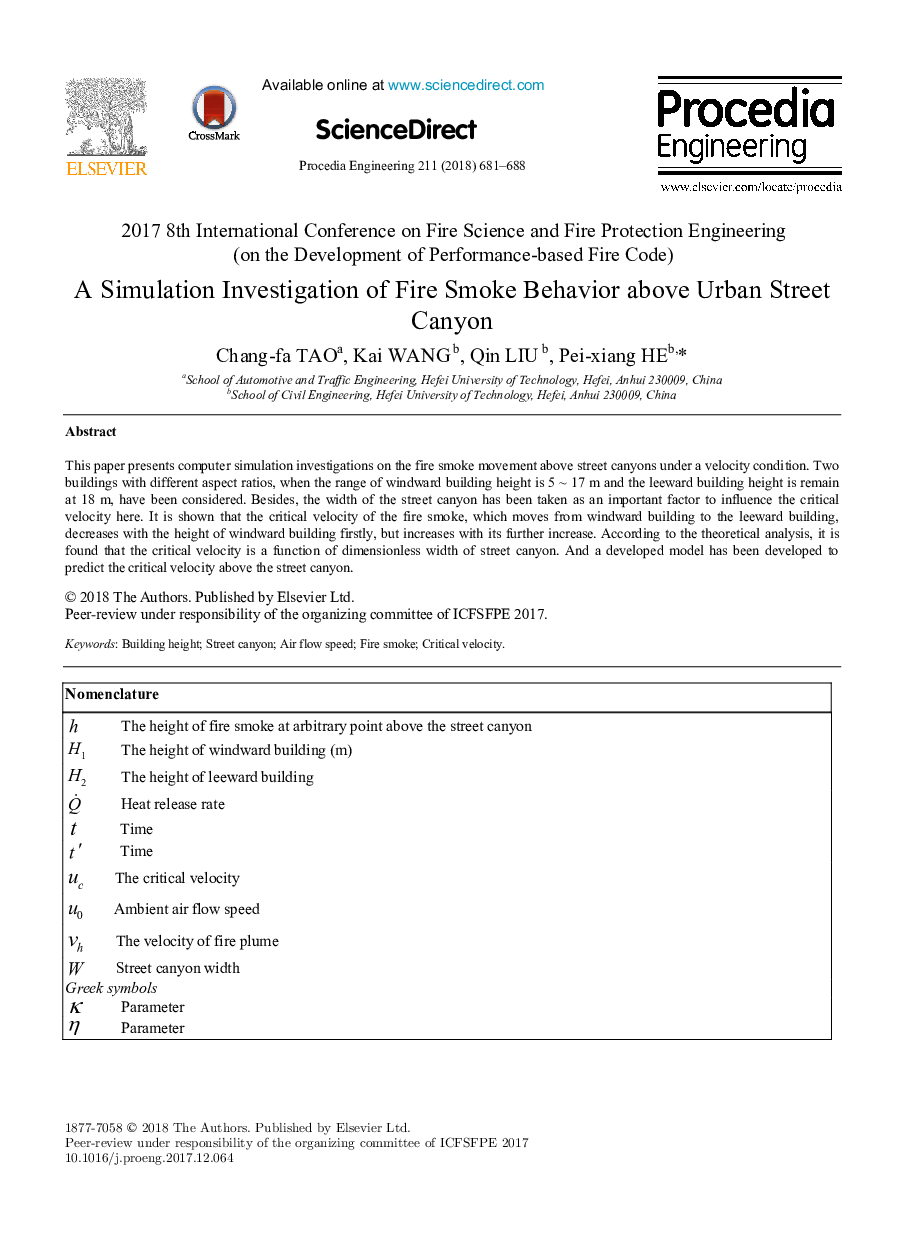| کد مقاله | کد نشریه | سال انتشار | مقاله انگلیسی | نسخه تمام متن |
|---|---|---|---|---|
| 7226402 | 1470612 | 2018 | 8 صفحه PDF | دانلود رایگان |
عنوان انگلیسی مقاله ISI
A Simulation Investigation of Fire Smoke Behavior above Urban Street Canyon
ترجمه فارسی عنوان
یک بررسی شبیه سازی رفتار دود آتش نشانی بالای خیابان شهری خیابان
دانلود مقاله + سفارش ترجمه
دانلود مقاله ISI انگلیسی
رایگان برای ایرانیان
کلمات کلیدی
ارتفاع ساختمان، دره خیابان، سرعت جریان هوا، آتش دود، سرعت بحرانی،
ترجمه چکیده
در این مقاله، تحقیقات شبیه سازی کامپیوتری در مورد حرکت دود آتشسوزی درون کانیهای دریایی تحت شرایط سرعت انجام شده است. دو ساختمان با نسبت ابعاد مختلف، زمانی که محدوده ارتفاع ساختمان 5 تا 17 متر و ارتفاع ساختمان درازا در 18 متر باقی مانده است، در نظر گرفته شده است. علاوه بر این، عرض کانین خیابان به عنوان یک عامل مهم برای تاثیر بر سرعت بحرانی در اینجا گرفته شده است. نشان داده شده است که سرعت بحرانی دود آتش، که از ساختمان بادگیر به ساختمان بیرونی حرکت می کند، در درجه اول با ارتفاع ساختمان برفی، با افزایش بیشتر، افزایش می یابد. بر اساس تجزیه و تحلیل نظری، مشخص شده است که سرعت بحرانی یک عملکرد عرضی بدون بعد از عمق خیابان است. یک مدل توسعه یافته برای پیش بینی سرعت بحرانی بالای کانونی خیابانی توسعه داده شده است.
موضوعات مرتبط
مهندسی و علوم پایه
سایر رشته های مهندسی
مهندسی (عمومی)
چکیده انگلیسی
This paper presents computer simulation investigations on the fire smoke movement above street canyons under a velocity condition. Two buildings with different aspect ratios, when the range of windward building height is 5 ~ 17 m and the leeward building height is remain at 18 m, have been considered. Besides, the width of the street canyon has been taken as an important factor to influence the critical velocity here. It is shown that the critical velocity of the fire smoke, which moves from windward building to the leeward building, decreases with the height of windward building firstly, but increases with its further increase. According to the theoretical analysis, it is found that the critical velocity is a function of dimensionless width of street canyon. And a developed model has been developed to predict the critical velocity above the street canyon.
ناشر
Database: Elsevier - ScienceDirect (ساینس دایرکت)
Journal: Procedia Engineering - Volume 211, 2018, Pages 681-688
Journal: Procedia Engineering - Volume 211, 2018, Pages 681-688
نویسندگان
Chang-fa Tao, Kai Wang, Qin Liu, Pei-xiang He,
